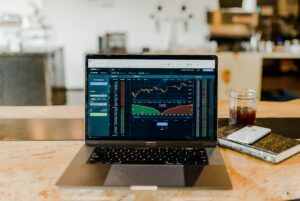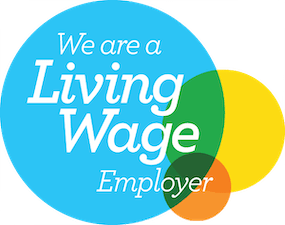The Autumn edition of Unbundling Uncovered, held on October 20th, brought together more than 675 registered attendees from the research market in our second virtual event for 2020. As always, there was plenty to debate and discuss. From the proposals by European regulators to carve out unbundling exemptions for portions of the research market, to the impact that COVID-19 has had on research valuations and pricing amid almost unprecedented demand for research services. Like all industries through the pandemic, the investment research market has had to adapt too, and not just to interacting virtually. The event also discussed the new products that are evolving to fit new demands, while in some corners of the market, traditional practises are being disrupted, for instance, in the corporate access space. Almost 3-years on from the introduction of the MiFID II unbundling rules, the global research marketplace is still evolving towards an accepted global standard that operates harmoniously. That’s why these Unbundling Uncovered events are important as a forum to discuss and debate the issues facing the industry.
We would like to thank all of our fantastic sponsors, speakers and delegates for their contributions and support. We look forward to seeing you all again for our 2021 summer event (Hopefully in person!).
If you registered on our virtual platform for this recent event, then feel free to login and watch back the replays. Alternatively, send an email to [email protected] with “replay” in the subject line.
Note: We operate these events under Chatham House Rules, so please refrain from publishing any specific quotes from our speakers or redistributing footage without our explicit consent.
Here’s what we learned from the event
1) The quest for regulatory convergence:
The regulatory backdrop for the research market shows no signs of convergence globally – the SEC will not align with Europe, while the EU seems committed to unbundling (but with carve outs to soften the blow for asset managers, and the UK remains hawkish, but is in listening mode.
UU speakers highlighted that the rule changes being proposed in Europe represent something of a test case by regulators to see how they are accepted by the marketplace and whether they will have some positive impact. If the latter proves to be the case, this could potentially open up the path to further regulatory convergence between Europe and the US.
What are the proposed changes? Assuming the exemption for market values of up to €10 billion is implemented, one speaker said that this would in theory cover 75% of stocks in the Eurostoxx 600 index, which potentially would alter the economics of how research is funded by European asset managers.
As one might expect, there were two schools of thought on these proposed reforms from industry participants. On the one hand, some speakers argued the European and UK asset managers have no appetite, or time, to roll back their MIFID2 compliant processes. On the other hand, some speakers viewed the proposed carve outs as the thin end of the wedge for rolling back the unbundled regime.
Regardless of whether the market shifts from the current status, or rebundles, other speakers stressed that asset managers, at this time, had bigger fish to fry – in other words – a little tinkering around the edges of the rules in an attempt to ‘’level the playing field’’ missed the wider point of the existential challenges facing active managers; the fierce competition from passive investment vehicles and private markets. While there was an argument to be made that the current market volatility and uncertainty has led to something of a renaissance for active managers, there isn’t yet sufficient evidence to suggest the tide has turned in any meaningful way.
Regulatory convergence between an unbundled Europe and a bundled US market is always hotly debated at our UU events. This time was no different. Despite global asset managers generally preferring harmonious global processes and rules, some of our speakers attested to a loss of momentum from US managers to shift processes in order to pay for research out of their P&L, as is mostly the case in Europe.
But that is not to say that US asset management firms aren’t being diligent in managing their research costs. Some speakers argued that much of the US research market already operates in an ideal middle ground, where the buyside has the freedom to consume a wide variety of research while also maintaining a robust and granular research valuation process.
While the unbundled vs bundled question revolves around the need for accountability and efficiency, other speakers pointed to more existential threats in the research market that, in the parlance of the natural world, are putting the biodiversity of the research market at risk.
This question relates to the sustainability of independent research in a market where, one speaker said, sell side research provision is being subsidised by primary market business, where research is bundled in with transactions, such as IPOs. Again, this isn’t a new problem, but it has contributed to driving down the price of research to such an extent that it risks making independent research an unviable business model. It is an open question as to whether regulators have this issue in their sights, but the threat to independent research remains real.
2) Pay your dues (for research), it’s complicated
One thing that has been universally accepted by all sides since MiFid II has been the adoption of technology to gather data and information on research consumption, via a host of vendors, many of whom have co-sponsored UU 2020 events this year.
As a result, both providers and consumers have a much clearer picture than ever before on consumption trends. During 2020 it is clear that consumption has risen exponentially. Yet despite this surge, the question of whether payments for these services is commensurate with that increased consumption remains contentious and complicated.
There are multiple variables that determine remuneration, and as we highlighted from our UU summer conference, time would only tell whether research providers would be rewarded for their in-demand services when performance and asset gathering levels became more clear as the year progressed.
Some sell side speakers said client remuneration had bifurcated between those asset managers that had performed well and those that had underperformed. In general terms, they said, it appeared that a majority of large active managers had grown assets and volumes and so were in a healthy position to reward those firms that had provided alpha generating ideas.
However, this would imply that either research budgets had risen or valuations of these services had risen (perhaps both), and there was considerable debate on this from our various speakers.
From a budget perspective, buy side speakers said there had been very little change in budgets in 2020 and that there appeared to be a misalignment on the valuation of these research services.
Indeed, the process of valuation has been heavily influenced by COVID-19 because it has changed the economies of scale in the way the service, particularly interactions, is delivered by the sell side. While exclusivity is highly valued by asset managers, the all-virtual environment offers the sell side the scope to serve more clients at one time. This has been the source of the misalignment, according to speakers, and could infer further price deflation for those services. This is no more prevalent than in the corporate access space.
3) Corporate Access to Access Direct
COVID has particularly affected the corporate access market, with the buy side and corporates’ perception of value of virtual engagements dramatically lower. Corporate Access has turned into a numbers game (quantity over quality).
Investment teams are now much more sophisticated, in the sense they have relationships with company management and can leverage these relationships. Some of our speakers said sell side organised meetings with 20-30 other buyside investors does not provide the quality and the level of intimacy desired and asset managers would rather decline these meetings, preferring to call the companies direct.
Going forward, some speakers said the buyside will proceed with going direct. However, the sellside would still play an important role as a middle-man for relationships that the buyside do not have with corporates, but at the end of day, asset managers that are fortunate enough to leverage relationships and go direct will continue to do so. From a corporate perspective, it appears that investor relations teams are open to more direct engagement from the buyside. Indeed smaller asset managers could punch above their weight if they manage relationships well and provide the feedback that corporates look for from these interactions.
4) COVID and the research product
With demand soaring and market uncertainty high during the pandemic one important question was how the research product itself has changed and responded to the needs of the asset management industry. Some of our buyside speakers said those firms with greatest resources and who are globally integrated came out on top through their provision of multiple perspectives on Covid-19.
That said, certain niche providers added value to specific parts of the buyside investment process. Those who stood out were firms that were most proactive. This not only includes sales and the client relationship side, but also analysts who were quick to react (early on trends, quick to pick up on shorter term data, and how to think about risk).
One clear trend that accelerated through the global pandemic was the insatiable appetite for data (models, Altdata and ESG), and tools that help the buyside interpret the data. The adoption of AI across the industry is growing, while in ESG, which speakers said had already reached an inflection point before COVID, is spurring demand for data and research from all parts of the market as ESG factors are now influencing the price of assets.








